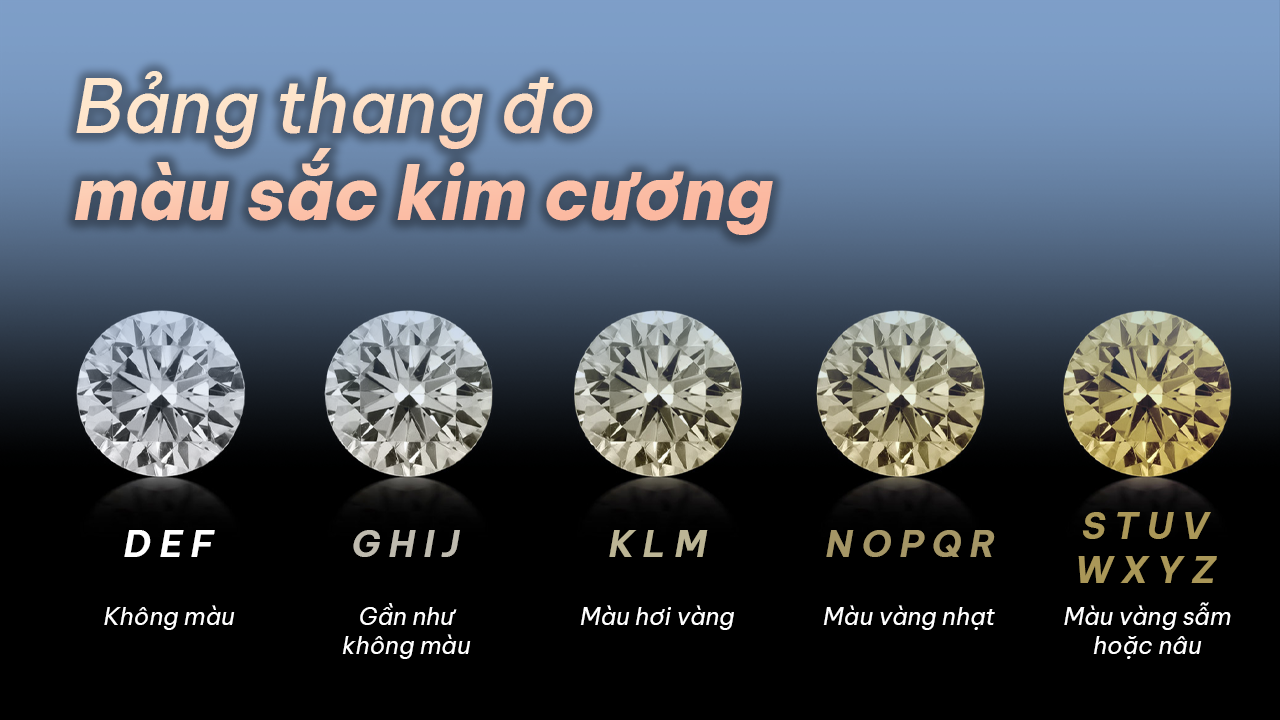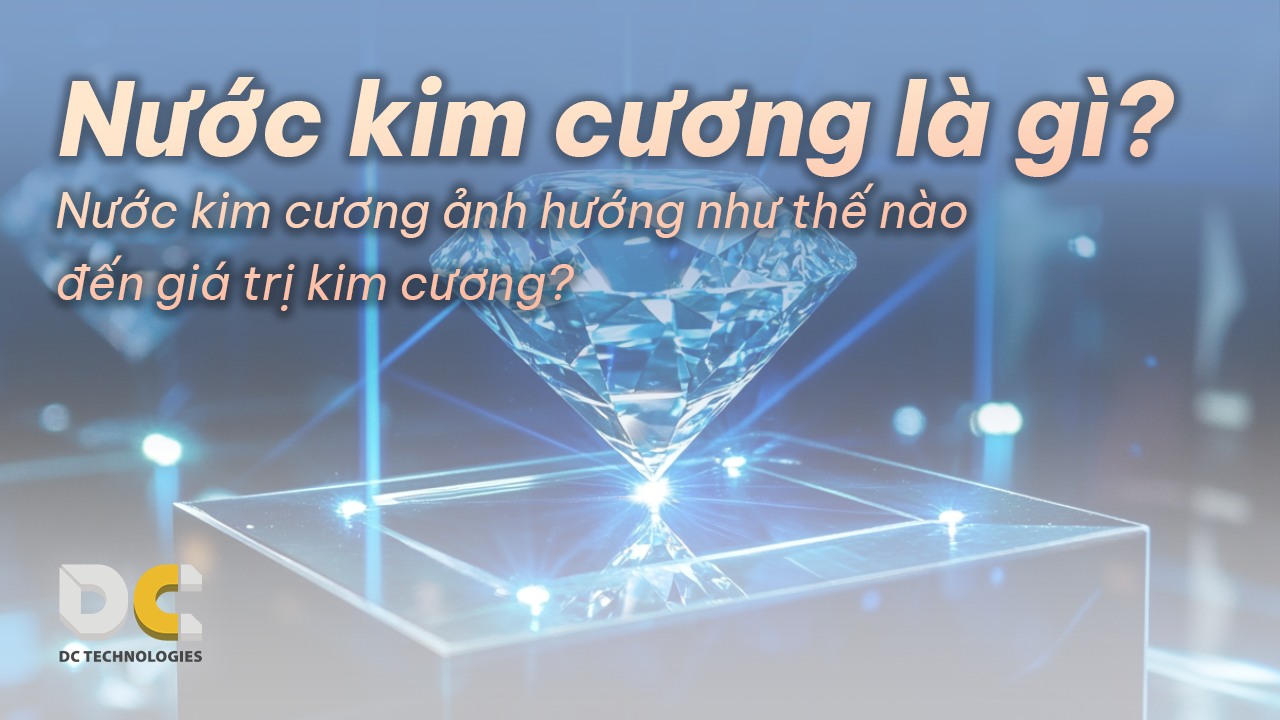News
What is diamond water? How does diamond water affect the value of a diamond?
Diamonds have long been known as a “luxurious” jewelry product, symbolizing elegance and status. To own a perfect diamond, people pay attention not only to its shape and size but also, importantly, to its color, also known as "diamond water." For those in the industry, this term is likely very familiar, but for newcomers, it may be a new concept. In this article, DC Tech will help you get acquainted with the concept of “diamond water” and understand its importance in evaluating a diamond’s value.
What is diamond water?
Diamond water is not a liquid like the water we commonly know. Instead, this term refers to the natural color of the diamond, reflecting its level of "clarity" or transparency.
A completely pure diamond will have no color, meaning it is as clear as water. However, due to natural factors in its formation, most of the crystal structures inside a diamond carry a slight hue, primarily in shades of yellow and brown. Therefore, the closer the diamond's water is to being "colorless," meaning achieving perfect transparency, the rarer and more valuable the diamond becomes.
Diamond Color Scale
Currently, there are many methods of classifying the color of diamonds, but the most common is the GIA (Gemological Institute of America) color scale—a widely recognized international grading system. This scale uses letters from D to Z to rank the color of diamonds. In this scale:
- D: Represents a diamond that is nearly colorless; it is the highest and rarest color grade.
- Z: Represents a diamond with distinct yellow, dark yellow, or brown hues; it is the lowest color grade.

The letters from D to Z represent decreasing levels of color, meaning that the further down the alphabet, the more intense the color of the diamond and the lower its value.
To better understand the color groups within each grade of diamond water, DC Tech has compiled detailed information in the table below:
Color group | Grade | Characteristics | Value |
Colorless | D, E, F | - The rarest and most highly sought-after diamonds in the scale. - Nearly transparent, colorless; it is impossible to distinguish between D, E, and F by the naked eye. | Highest |
nearly | G, H, I, J | - Not as valuable as the previous group, but a popular choice for jewelry due to more affordable prices. - May have slight color traces visible only when closely examining the diamond upside down in a lab; the color will slightly vary by grade. | High |
Slightly yellow | K, L, M | - A great choice for those less sensitive to color. Many people even consider this their favorite diamond color. - Recognizable: Often has a light yellow hue, which is easily visible when the diamond is turned upside down. | Average |
Light yellow | N, O, P, Q, R | - This group is generally not favored for jewelry use. - Recognizable: Often has a light yellow color, easily observable by the naked eye. | Low |
Deep yellow or | S, T, U, V, W, X, Y, Z | - This group is generally not favored for jewelry use. - Recognizable: Often has dark yellow or brown hues, easily observable by the naked eye. | Lowest |
Why does the GIA Diamond Color Scale start with the letter D?
In the past, evaluating and classifying the color of diamonds was a task that required deep expertise and experience. Different classification systems, such as the alphabet system (A, B, C,...), numerical system (1, 2, 3,...), or Roman numerals (I, II, III,...), along with varying color descriptions, made it harder to compare and select diamonds. Both traders and customers struggled to find common ground.
Recognizing the need for a clear and consistent color grading system, GIA developed an entirely new classification method. The introduction of the GIA color scale completely transformed this landscape. With strict standards and high precision, the GIA system provides a structured approach, categorizing diamonds by their color grades in a detailed and consistent manner. Furthermore, to ensure it was distinct from previous classification systems, GIA chose to start its grading scale with the letter D and end with Z.
Which diamond color should you buy?
Financial considerations play an important role when deciding to purchase a diamond. If your budget allows, you should choose diamonds with water grades D or E – these diamonds are nearly colorless, offering the highest purity and value in the market. However, if your budget is more limited, you can consider lower color grades and take other factors into account, such as weight or cut quality. Ideally, grades from F to I are a good balance between budget and value, offering a good compromise between color and price. At these grades, the color of the diamond is still very pure, and only slight differences can be detected when compared directly to higher grades.
In this way, DC Tech has helped you better understand the concept of diamond water and the GIA diamond color grading scale. You can easily apply this information to evaluate and classify diamonds, enabling you to make smarter decisions when purchasing or investing in diamonds.

